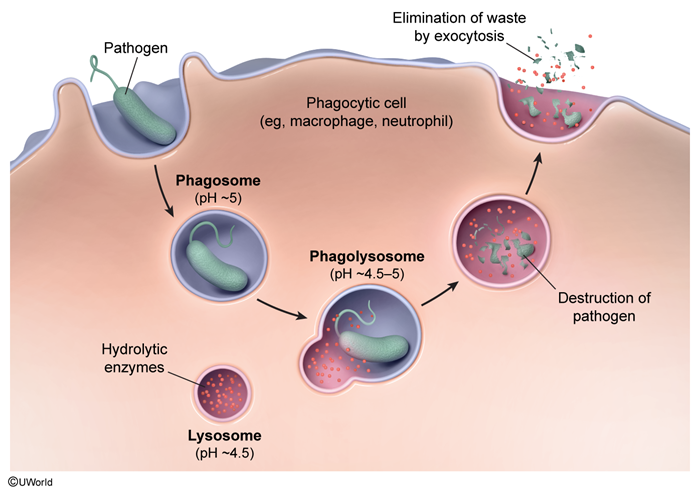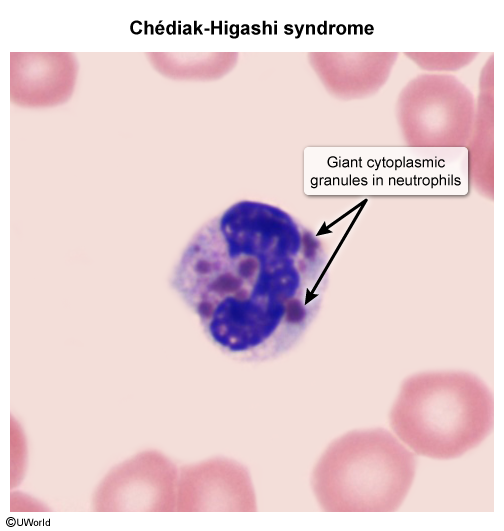Chédiak-Higashi Syndrome
Article Sections
Introduction
Chédiak-Higashi syndrome (CHS) is a rare autosomal recessive disorder characterized by impaired lysosomal trafficking that results in immunodeficiency and oculocutaneous albinism.
Pathogenesis and risk factors
A lysosome is an organelle that contains hydrolytic enzymes, functioning as the cell's "digestive system." Lysosomes degrade extracellular (eg, invading pathogens) and intracellular (eg, waste products) components (Figure 1). Therefore, lysosomal structure and function are highly regulated. Patients with CHS have a mutation in the lysosomal trafficking regulator gene (CHS1/LYST) on chromosome 1. The CHS1/LYST protein normally regulates lysosomal trafficking and fusion within the cell, and, without this protein, abnormal giant granules (ie, secretory lysosomes) form in various cells:
- Immune cells: Giant cytoplasmic granules containing hydrolytic enzymes form in the cytoplasm of neutrophils, cytotoxic T cells, and natural killer cells. These granules cannot fuse with phagosomes, impairing pathogen degradation. Neutrophil chemotaxis and phagocytosis can also be affected, limiting neutrophil activity at the site of infection or inflammation.
Continue Learning with UWorld
Get the full Chédiak-Higashi Syndrome article plus rich visuals, real-world cases, and in-depth insights from medical experts, all available through the UWorld Medical Library.
Figures

Images
